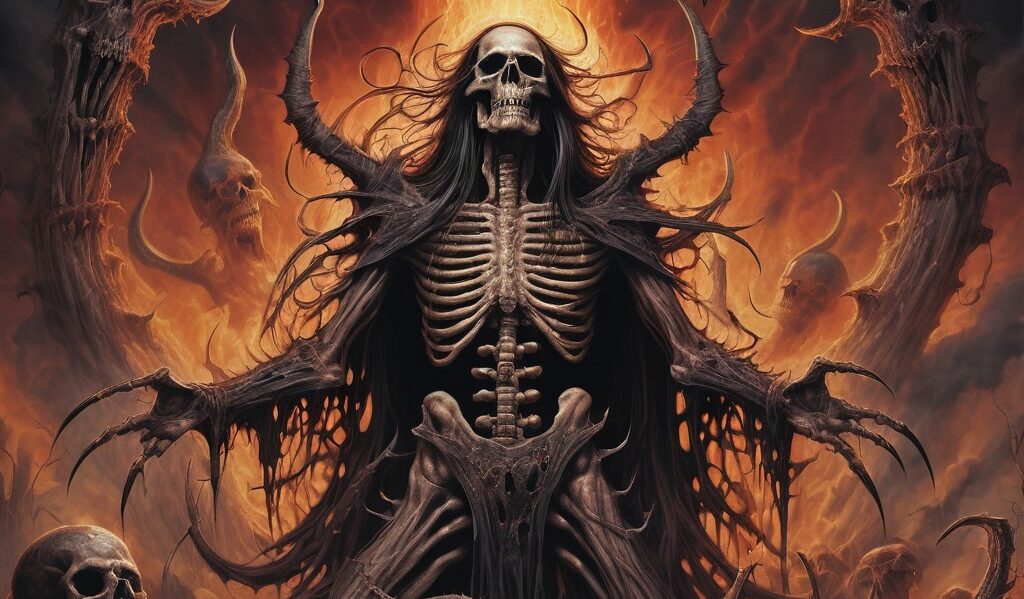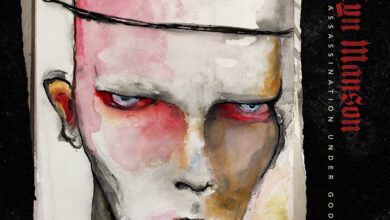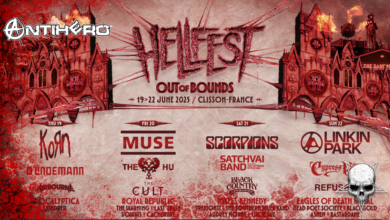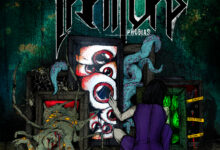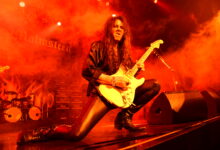Rare is the musical genre that emerges from shadowy underground depths to ascend toward technical sophistication while maintaining its primordial essence. Death metal stands as such a phenomenon – a sonic force born in dimly lit garages and makeshift recording spaces now evolved into an intricate art form that continues to push the boundaries of extreme musical expression.
Deep beneath the surface of conventional metal’s evolution lies a rich tapestry of innovation, where pioneering spirits crafted the foundations of what would become a global musical movement. The genre’s journey from its primitive incarnations in the early 1980s to today’s precisely engineered compositions represents a remarkable transformation, yet one that preserves the raw intensity that first sparked its creation.
This exploration delves into the darkest corners of death metal’s evolution, examining the groundbreaking albums that shaped its sonic architecture, the visionary bands that expanded its horizons, and the cultural undercurrents that propelled its development. Through the lens of advancing production techniques, evolving lyrical themes, and expanding musical elements, we uncover the complete narrative of this dynamic genre’s ascension from underground obscurity to worldwide recognition.
Foundational Musical Elements
Beneath death metal’s thunderous exterior lies an intricate architecture of sound, crafted through decades of sonic evolution. The genre’s transformation from primal aggression to sophisticated artistry reveals itself through distinct musical elements that form its very essence.
Core Instrumental Characteristics
Death metal’s sonic foundation rests upon the shoulders of two guitarists, a bass player, a vocalist, and a drummer, a configuration that has become the genre’s immutable backbone. Masters of their craft employ distinctive techniques like palm muting and tremolo picking, pushing these methods beyond conventional boundaries into realms of technical virtuosity. Through heavily distorted and downtuned strings, guitarists construct towering walls of sound that define death metal’s crushing aesthetic.
The genre’s most distinctive characteristic emerges through its vocal approach. Death growls transcend mere screams, manifesting as specialized techniques that have become synonymous with the genre’s identity. These guttural expressions serve as the perfect complement to death metal’s aggressive musical foundation, creating an atmosphere of otherworldly intensity.
Rhythmic Evolution
Death metal’s rhythmic landscape has undergone a remarkable metamorphosis since its inception. Drummers have ascended to new heights of complexity, with hyper double-bass blast beats emerging as the genre’s rhythmic cornerstone. Modern death metal percussion demonstrates a stunning dynamism, weaving through labyrinthine time signatures and explosive tempo shifts.
The genre’s rhythmic architecture distinguishes itself through dramatic contrasts. Songs traverse vast emotional territories, from glacially slow passages to volcanic eruptions of alternate picking fury. This mercurial approach to tempo variation has become an indelible mark of death metal’s identity.
Harmonic Development
Death metal’s harmonic realm reveals sophisticated compositional depths. Contemporary practitioners predominantly wield the natural minor scale, with the Aeolian mode serving as the foundation for their sonic edifices. Bands increasingly incorporate labyrinthine chord progressions and advanced harmonic techniques, crafting soundscapes of unprecedented complexity.
Each subgenre has carved its own harmonic identity from this foundation. Melodic death metal architects construct twin guitar melodies over Aeolian progressions, while technical death metal ventures into experimental territories, employing non-diatonic triads to achieve sounds of increasing darkness and transgression.
These musical elements interweave in a complex tapestry of sound. The confluence of instrumental mastery, rhythmic innovation, and harmonic sophistication continues to push death metal beyond conventional boundaries. This foundation allows the genre to maintain its primal intensity while evolving into increasingly refined forms of artistic expression.
Pioneering Bands and Their Contributions
Deep within the primordial abyss of heavy metal’s evolution lurk the architects who carved death metal’s distinctive identity from raw sonic matter. Like ancient leviathans stirring from their slumber, the raw energy of metal began fracturing into more extreme forms during the late 1970s and early ’80s, birthing the terrifying beauty we now revere as death metal.
Early Innovators and Their Impact
The San Francisco Bay Area bore witness to Possessed‘s emergence, harbingers of a new musical darkness in 1983. Their monumental opus “Seven Churches” emerged in 1985, a testament to their pioneering spirit that bridged the chasm between thrash and death metal’s nascent form. Meanwhile, in Florida’s murky depths, Chuck Schuldiner conjured his vision through Death, whose 1987 manifesto “Scream Bloody Gore” would become the sacred text from which future disciples would draw their inspiration.
Second Wave Progression
The late 1980s unleashed a tempest of creativity, particularly within Florida’s fertile grounds. Obituary, Morbid Angel, and Deicide signed their names in blood with eager labels by 1989, forging what would become the distinctive Florida death metal sound. Like a plague spreading across vast oceans, the movement infected European shores, where Swedish visionaries Entombed and Dismember emerged from frozen northern realms, bringing their own savage interpretation to the genre.
Modern Pioneers
Death metal refuses to lie dormant, perpetually metamorphosing through various incarnations. Blood Incantation and Cerebral Rot now stand as sentinels of the modern era, preserving the genre’s primitive essence while pushing into unexplored territories. These contemporary torchbearers channel that elusive ancient spirit while carving their own paths through the genre’s ever-expanding universe.
The evolution’s magnificence lies in how each era has contributed unique elements to death metal’s sonic tapestry. From primitive production’s raw savagery to modern technical sophistication, this transformation continues to inspire new generations of sonic architects.
These pioneering spirits cast shadows far beyond their immediate epoch. Their innovations in vocal techniques, guitar artistry, and songwriting have become the foundation upon which countless bands have built their sonic cathedrals. Their influence has spawned numerous subgenres, from technical death metal’s labyrinthine complexity to melodic death metal’s dark beauty, each adding new dimensions to this ever-evolving art form.
Lyrical and Thematic Evolution
Beneath death metal’s thunderous exterior lies a remarkable transformation – a metamorphosis from gore-soaked origins into profound philosophical discourse and incisive social commentary. This evolution reveals the genre’s capacity for intellectual depth beneath its aggressive facade.
From Gore to Philosophy
Death metal’s primitive fixation with horror and visceral imagery has blossomed into something far more profound. Though violence remains a potent metaphor, it now serves as a lens through which artists examine deeper societal and personal truths. This transformation found its first voice through Chuck Schuldiner’s band Death, whose later works contemplated human mortality and the weight of conscious choice. Visionary architects like Gorguts have further elevated this philosophical discourse, weaving intricate tapestries of sound that challenge conventional structures while exploring humanity’s eternal questions.
Sociopolitical Commentary
Death metal’s evolution has birthed a powerful platform for addressing contemporary crises. Modern practitioners wield their art as weapons against injustice, becoming fierce advocates for inclusion, racial equality, and social transformation. The genre maintains its primal intensity while confronting pressing issues – environmental devastation, labor exploitation, and systemic oppression. Bands like Cattle Decapitation stand as prophets of ecological doom, while others turn their gaze toward political corruption and economic inequality.
Experimental Themes
Perhaps most fascinating is death metal’s venture into experimental territories. Blood Incantation contemplates cosmic solitude and human insignificance against the vast canvas of space and time. Sophisticated narratives emerge through compositions that draw inspiration from 20th-century philosophical movements. Modern practitioners demonstrate remarkable dexterity in balancing technical virtuosity with profound thematic exploration.
This intellectual evolution resonates differently within the death metal community than without. Devotees discover catharsis and enlightenment where outsiders perceive only chaos. The genre has transcended its origins to become a sophisticated artistic medium, where even its most extreme elements serve as vehicles for conveying complex ideas and profound emotional truths.
Production and Recording Evolution
Within the sacred chambers of recording studios, death metal’s sonic architecture has undergone a profound metamorphosis, transforming from primitive analog rawness into crystalline digital precision. This evolution charts a course through technological revolution and artistic adaptation.
Early Recording Techniques
The late 1980s saw Morrisound Recording Studio emerge as the sacred temple of death metal’s sonic identity. Under the guidance of visionary producer Scott Burns, revolutionary techniques materialized that would forge the genre’s definitive sound. These early pioneers faced formidable challenges – drummers grappling with their own compositions found salvation through innovative solutions, including precise kick drum calculations using primitive DOS-based systems.
Analog limitations bred extraordinary creativity. Engineers developed arcane arts of microphone placement to capture death metal’s intense performances. The cornerstones of early production manifested through:
- Meticulous drum microphone positioning
- Masterful manipulation of room acoustics
- Specialized guitar amplification architecture
- Revolutionary tape-based editing methodologies
Digital Revolution Impact
The dawn of the digital age heralded seismic changes in death metal’s sonic realm. The emergence of Digital Audio Workstations (DAWs) democratized recording, bestowing upon bands the power to craft professional-quality recordings with modest resources. This technological revolution transformed production’s very essence – perfect takes materialized through digital manipulation, while sample reinforcement became an indispensable weapon in the producer’s arsenal.
Modern Production Approaches
Modern architects of sound blend vintage wisdom with cutting-edge innovation, wielding an arsenal of tools:
Advanced Production Elements:
- Digital drum manipulation and enhancement
- Layered compression techniques
- Surgical equalization control
- Transformer-based harmonic enrichment
Professional studios have adapted to this shifting landscape, focusing their expertise on drum recording and final mixing while other instruments find their voice in home recording environments. This evolution sparks fierce debate – purists clash with modernists over the authenticity of heavily edited performances versus traditional recording’s raw spirit.
Death metal’s sonic transformation reflects both technological progress and artistic evolution. The genre’s signature sound, born from Morrisound’s analog limitations, has evolved into unprecedented realms of precision and clarity. This journey from magnetic tape to digital dominion represents not merely technological advancement, but death metal’s relentless pursuit of ever more extreme sonic territories.
Subgenre Development and Fusion
Like ancient rivers diverging into countless tributaries, death metal’s evolution has carved distinct yet interconnected pathways through extreme music’s landscape. The genre’s relentless pursuit of innovation has birthed some of metal’s most technically demanding and atmospherically rich compositions.
Technical Death Metal Evolution
Technical death metal emerged as an inevitable progression from death metal’s primal form, driven by virtuosos pushing their instruments beyond conventional limits. Atheist‘s jazz-influenced experimentation in the early 90s opened floodgates to a realm of mind-bending complexity. Masters like Necrophagist and Obscura further elevated this technical artistry while preserving death metal’s savage core.
The architectural pillars of this evolution manifest through:
- Labyrinthine song structures with serpentine rhythms
- Masterful deployment of diminished chords and arpeggios
- Virtuosic string-skipping techniques
- Intricate bass passages and inhuman drumming patterns
Melodic Death Metal Impact
The melodic death metal movement emerged from Gothenburg’s frozen shores like a siren’s call. Dark Tranquillity and In Flames crafted an alchemical fusion, wedding death metal’s ferocity with traditional heavy metal’s melodic grace. Yet this evolution sparked fierce debate among purists, who questioned melodeath’s legitimacy within death metal’s sacred halls.
Progressive Elements Integration
Death metal’s progressive frontier reveals remarkable sonic alchemy. Opeth‘s magnum opus “Blackwater Park” stands as a monumental testament to this evolution, demonstrating how progressive elements could intertwine with death metal’s foundation. Visionaries like Between the Buried and Me and Black Crown Initiate continue pushing these boundaries, weaving increasingly complex sonic tapestries.
Most fascinating is the cross-pollination between these subgenres. Technical death metal now embraces ambient and post-metal influences, with Fallujah and Ulcerate leading this sonic metamorphosis. Death metal’s progressive wing continues its exploration, drawing from multiple wells of inspiration to reshape its fundamental nature.
This evolution’s true magnificence lies in its diversity. While some practitioners maintain traditional forms, others forge new paths through bold experimentation. Progressive and technical death metal have developed distinct voices, each speaking with unique intent and execution. This perpetual evolution reflects both the genre’s remarkable adaptability and its architects’ restless creative spirit.
Global Impact and Cross-Cultural Exchange
Like a dark tide sweeping across continents, death metal’s influence flows beyond geographical boundaries and cultural barriers. The genre’s metamorphosis from underground resistance to worldwide artistic movement stands as one of modern music’s most profound evolutionary tales.
International Scene Development
Death metal’s tendrils have taken root in fertile grounds across 42 distinct national scenes. Through primitive tape-trading networks of the 1980s and 1990s, underground communities forged connections that would birth international alliances with pioneering labels like Combat, Earache, and Nuclear Blast.
The genre’s global dominion reveals itself through a census of devoted practitioners:
- European Strongholds: Swedish legions (76 bands), Dutch harbingers (25 bands), Norwegian sovereigns (24 bands)
- Americas: American vanguard (98 bands), Canadian disciples (24 bands), Brazilian warriors (13 bands)
- Asia-Pacific: Australian sentinels (20 bands), Japanese masters (6 bands)
Cultural Adaptation
Death metal’s dark poetry finds unique expression through diverse cultural lenses. Indonesian practitioners weave religious conviction with extreme musical expression, demonstrating the genre’s capacity to embrace traditional values while maintaining its fierce identity. This cultural alchemy has captured international attention, manifesting in Dutch label Extreme Terror Production’s “Grindonesia” compilation – a testament to Indonesian innovation.
Most profound is death metal’s transformation into a vessel for indigenous resistance and preservation. Ancient tongues – Guarani, S’malgyax, and Algonquian – now echo through distorted amplifiers, as bands wield the genre’s power to defend cultural heritage, ancestral lands, and anti-colonial struggles.
Regional Style Emergence
Each region’s interpretation of death metal reveals unique artistic fingerprints. Sweden’s “Gothenburg sound” emerged like frost crystals forming unique patterns, emphasizing melodic grace and philosophical depth over traditional horror imagery. Mexican innovators like Cenotaph carved their own path through the underground, transcending mere brutality to achieve sophisticated artistic expression.
Finland’s contribution flows through bands like Amorphis, who merge death metal’s aggression with progressive rock’s complexity and folk music’s ancestral spirit. Meanwhile, Quebec stands as a beacon of technical innovation, its scene birthing increasingly complex interpretations of the genre.
This global cross-pollination has birthed a thousand dark flowers, each bearing unique characteristics while maintaining death metal’s essential nature. Local traditions, cultural narratives, and regional influences weave together in a tapestry of sound that transforms an American underground movement into a global artistic revolution.
Conclusion
Death metal’s ascension from subterranean depths to worldwide reverence stands as a testament to its artistic magnificence. Through decades of metamorphosis, this sonic leviathan has maintained its primal intensity while evolving into increasingly sophisticated forms – a rare alchemy in modern music’s landscape.
Primitive aggression has blossomed into technical virtuosity, while analog rawness has yielded to crystalline digital precision. Yet beneath this evolution, death metal’s spirit remains uncompromising and pure. Practitioners across continents continue pushing beyond established boundaries, weaving local traditions and contemporary narratives into their sonic tapestries.
Most profound is death metal’s transcendence beyond mere musical expression – emerging as a vessel for philosophical contemplation, societal reflection, and cultural preservation. Each regional interpretation adds new hues to the genre’s palette, painting an ever-expanding canvas of artistic innovation.
The horizon burns bright with possibility. New generations of sonic architects discover fresh pathways through death metal’s labyrinthine depths, ensuring the genre’s perpetual evolution while honoring its sacred origins. This delicate dance between tradition and innovation promises to fuel death metal’s artistic journey through the decades to come.

